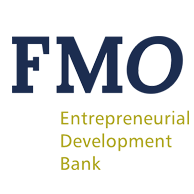Finding ways to better support female entrepreneurs
Gender Finance 1.0 successfully put the gender finance issue top of the agenda. No one still seriously questions that achieving more effective financing of female entrepreneurs is a vital issue globally. The Gender Finance 2.0 question is how?
A panel of experts — Elisabeth Ballreich, Investment Officer at Women’s World Banking Asset Management; owner of Anna + Nina and web entrepreneur, Anna de Lanoy Meijer; Mulenga Silwamba, Head Retail at Cavmont Bank in Zambia; FMO Senior Gender Finance Advisor, Saskia Vossenberg; and Victoria White, Managing Director for Accion’s Global Advisory Solutions — discussed what needs to be done to remove the constraints stopping female entrepreneurs accessing the finances that can unlock the full potential of their business.
A primary constraint, all agree, is women not being banked. A recent Fintech survey confirms that 72% of men globally have a bank account, but only 65% of women. In developing countries the gap is 9%. And though the reasons behind local variations — why no gap in South Africa yet a 30% gap in Turkey, for example? — merit investigation, the core statistic is that in recent years the overall gender gap in financial inclusion has not shrunk at all.
Know your market
One key constraint, it was felt, is that banks tend to lack understanding of women entrepreneurs and their circumstances, and it would certainly help to have more gender diversity ay the top of banks, both to keep the issue front-of-mind and develop more empathetic and imaginative approaches to solving the challenges.
Raising awareness can be achieved in a variety of ways. Mulenga described an initiative in Zambia where bankers went out to female entrepreneurs in their work environment, discussed constraints and afterwards a session was run where the entrepreneurs could pitch their business ideas directly to an audience including the bank’s CEO and the (female) Minister of Finance.
Data analytics can also help confirm and quantify what many know instinctively: women are generally-speaking very creditworthy customers with higher retention rates. Hard data confirming this could positively influence loan and other decisions.
Make it relevant
A reason, the panel believed, women often don’t get the support from banks they need is that banks don’t know how to treat them: one moment they see them as retail clients, the next they push microbusinesses through bureaucratic processes designed for far larger companies. On the other hand, there’s also a tendency to assume all women entrepreneurs run micro-businesses, when actually there are many women-led SMEs out there looking for a very different scale of financial services – but still geared to the needs of a woman entrepreneur.
Credit alone is not enough. As with any client group, banks must give women what they actually need. The right form of relationship banking is important and in Nigeria, some banks offer a digital service backed up by relationship banking.
Often financial education tends to be skills-gap training that doesn’t relate to women’s day-to-day experience and so doesn’t change behaviour. Panel members felt a more holistic support, helping the woman develop her business plan or take her business to the next level, is what is wanted. And good training products are out there, delivered by all sorts of organisations, so financials just need to plug into those services and join the dots.
Inappropriate processes
Banks often haven’t designed their systems with women or local cultural dynamics in mind. In many countries women hand over the money they earn to their husbands, so they simply don’t get through traditional KYC processes. And for SME lending, banks rely on collateral, which women may not have if, for example, land titles are in the man’s name. as a result, in Zambia, people have set up their own village banks, where women now borrow and deposit US $15 million a year nationally.
Reaching your audience
One reason women by-pass commercial banks in this way is they feel traditional financial institutions are not for them. For example, Elisabeth told how in Kenya people tended to believe banks are only interested in you if you are highly educated and/or wealthy.
To address this perception, Women’s World Banking worked with the producers of a Kenyan soap opera with 6 million viewers to introduce a storyline in which a bank manager encourages women to open an account. They involved 3 local banks in the campaign and as a result an additional 140,000 opened a bank account.
A very creative way to raise awareness, but of course awareness raising shouldn’t be one-way traffic. As one audience member, herself a board member of an African financial institution, pointed out, women MSME entrepreneurs tend to be very savvy individuals. So banks would be well advised to try to learn from them, too. Few would disagree.

